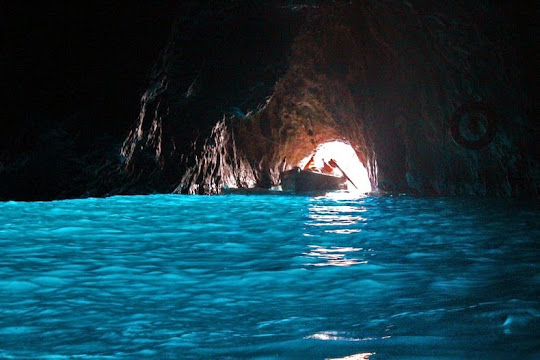The Blue Grotto is 60 meters long and 25 meters wide. The clear blue waters go down 150 meters until it reaches the sandy bottom. Light into the cave comes from two sources: one is a small hole in the cave wall, precisely at the waterline, that is a meter and half in diameter, and used as the entranceway. The second source of light is a larger submerged hole lying directly below the entranceway, which is responsible for most of the lighting.

The grotto was known by the Romans, as proved by the antique statues which were found in the cave. It is thought that the grotto was the personal swimming hole of the Emperor Tiberius, when he moved the capital of the Roman Empire to the island in 27 AD. In Tiberius' time, the grotto was decorated with several statues of Roman gods which have been recovered from the cave and it is thought more might lie on the deep bottom. The grotto was known to the locals under the name of Gradola, after the nearby landing place of Gradola, but it was avoided because it was said to be inhabited by witches and monsters.
The Blue Grotto was largely forgotten until it was rediscovered in 1826, by Polish poet August Kopisch and his Swiss friend, the artist Ernest Fries. Kopisch was greatly impressed by the beauty of the cave and described it in his book "Entdeckung der blauen Grotte auf der Insel Capri”. Since then the Blue Grotto has become the emblem of the island of Capri bringing tourists from far-off places. Two years later, the poet Wilhelm Waiblinger wrote an ode to it as a tribute to the era of Romanticism and man's "return to nature." It subsequently inspired Hans Christian Andersen's 1835 novel, The Improvisor, a 19th-century bestseller that triggered an unending flow of Grand Tour visitors to Capri.

The entrance to the Blue Grotto is crowded with tourist boats.




Source
